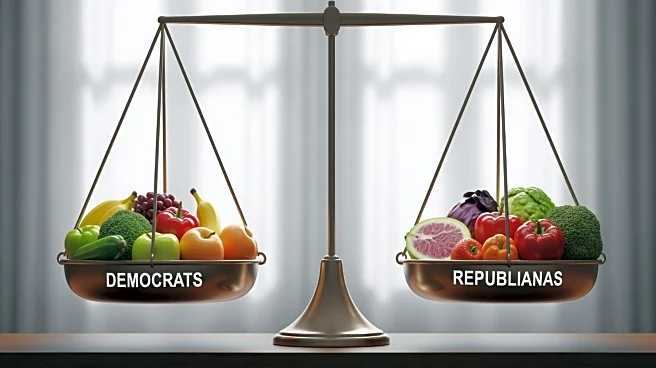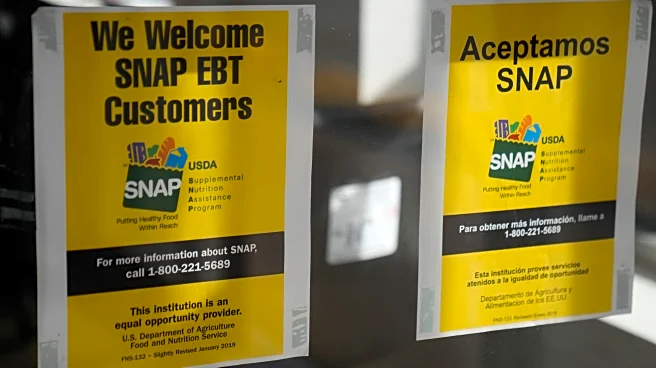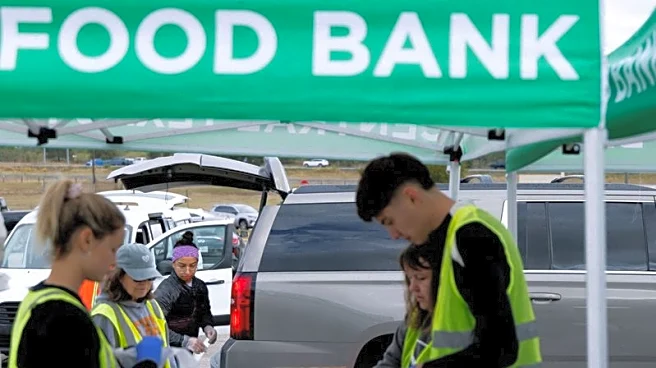What's Happening?
President Trump has taken steps to alleviate the impact of the ongoing government shutdown on families relying on the Supplemental Nutrition Assistance Program (SNAP). With the shutdown poised to become
the longest in U.S. history, the administration plans to use a contingency fund to provide partial SNAP benefits. This decision comes as the program ran out of funding, affecting over 42 million Americans. The contingency fund, containing approximately $4.6 billion, will cover 50% of eligible households' benefits for November. However, this amount falls short of the $9 billion needed for full benefits, leading to potential delays and reduced payments.
Why It's Important?
The decision to use the contingency fund highlights the significant impact of the government shutdown on vulnerable populations. SNAP is a critical program for millions of Americans, and the partial funding underscores the challenges faced by recipients who may experience delays and reduced benefits. The situation also reflects broader political tensions, as Democrats and Republicans remain at an impasse over spending measures. The administration's move to partially fund SNAP may provide temporary relief, but it also raises questions about the long-term sustainability of such measures and the potential for increased food insecurity.
What's Next?
As the shutdown continues, the administration and Congress face pressure to reach a resolution that fully restores SNAP funding. Legal challenges and advocacy efforts may intensify, with stakeholders pushing for the use of additional funds to cover the shortfall. The situation could also prompt states to explore alternative funding mechanisms to support affected families. The ongoing political stalemate may lead to further scrutiny of government priorities and the effectiveness of contingency measures in addressing urgent needs.













